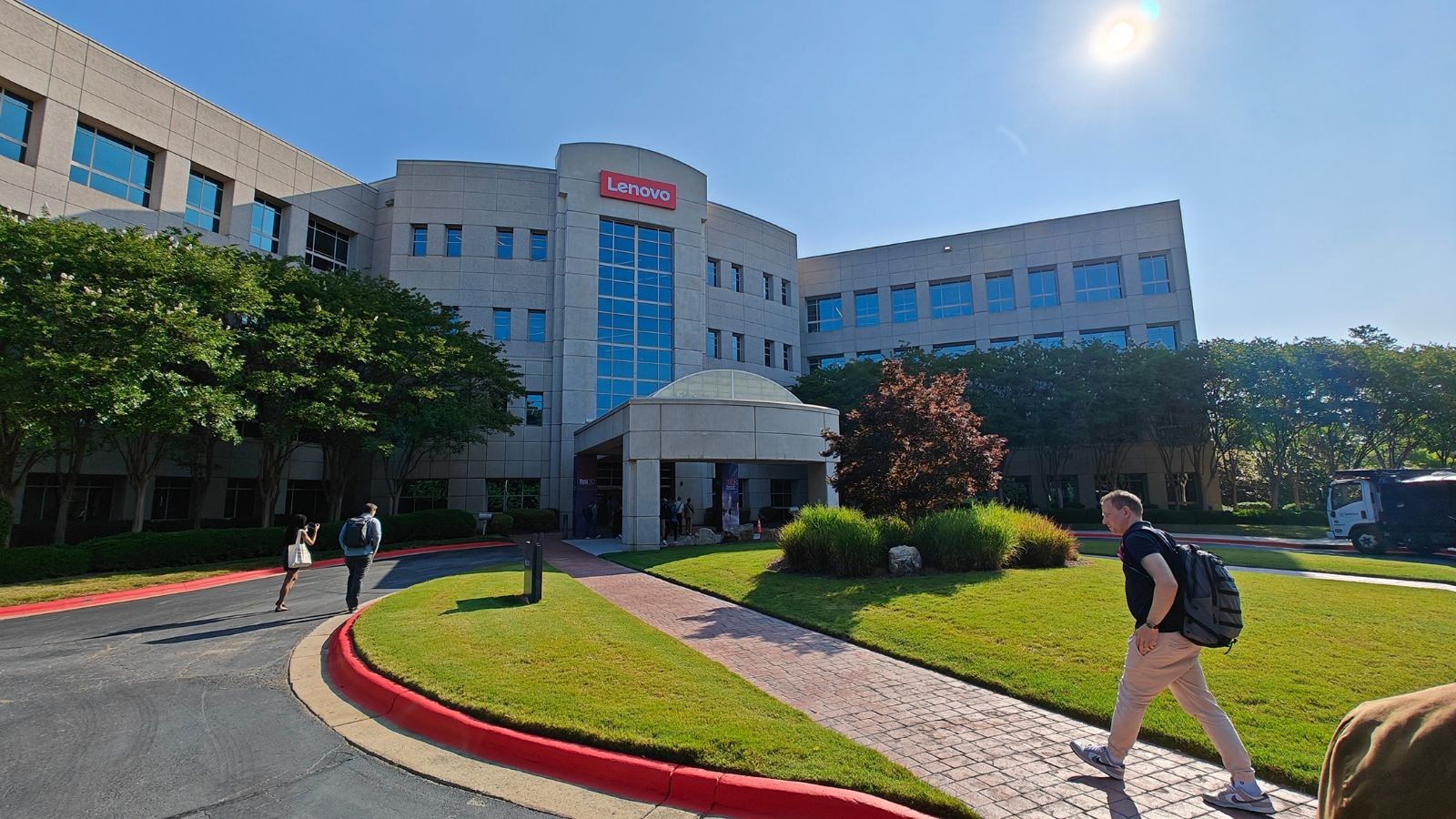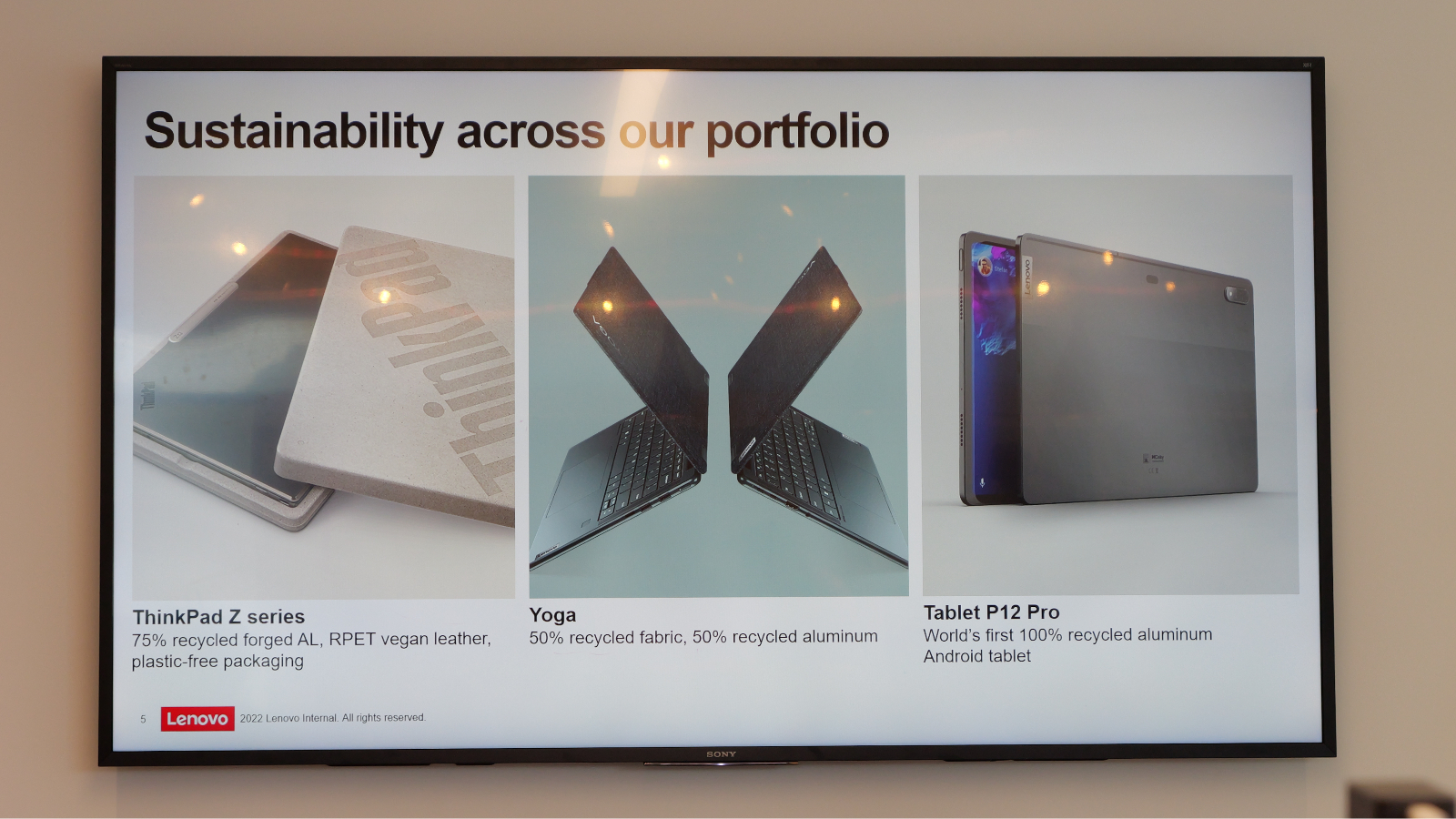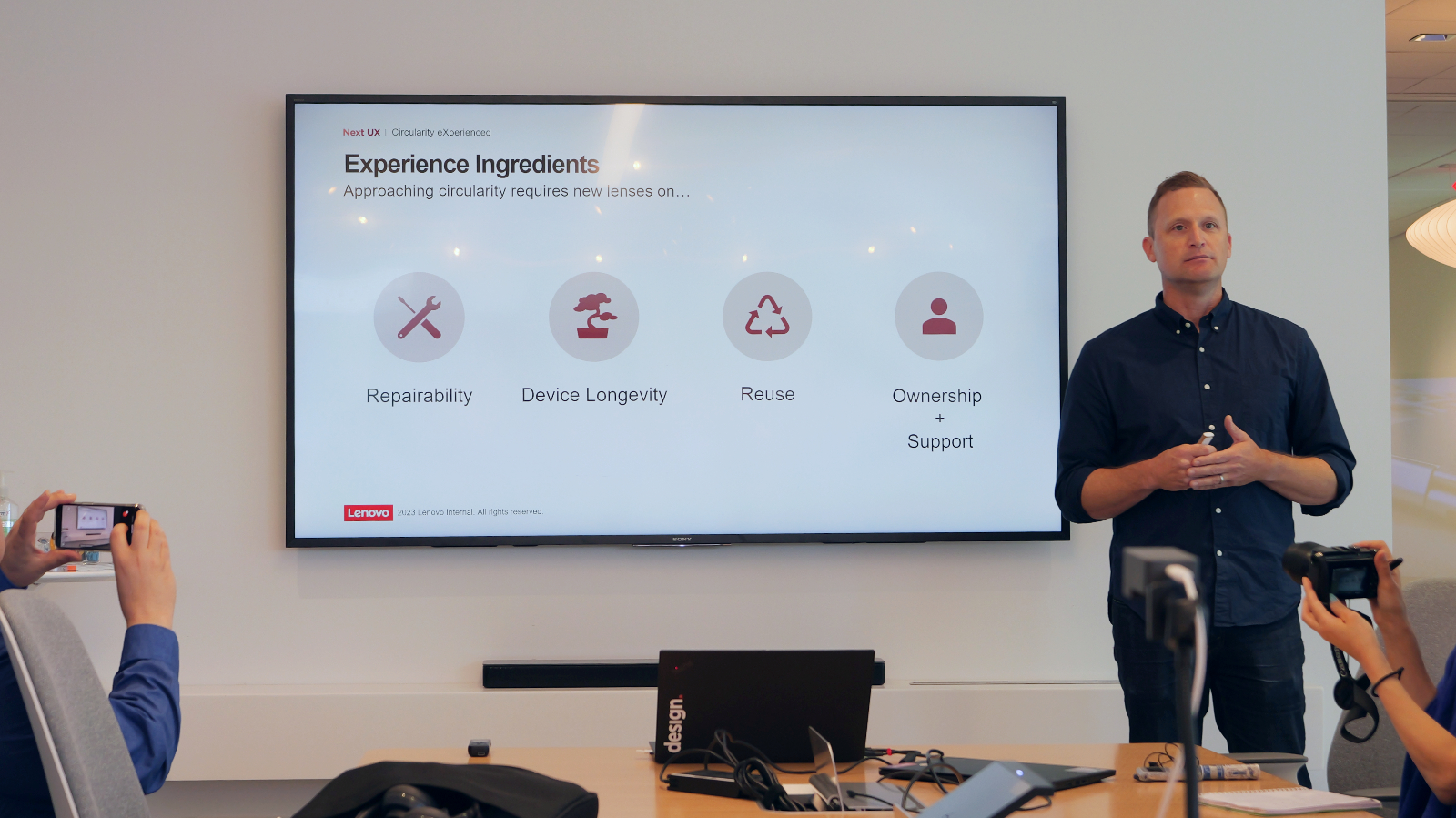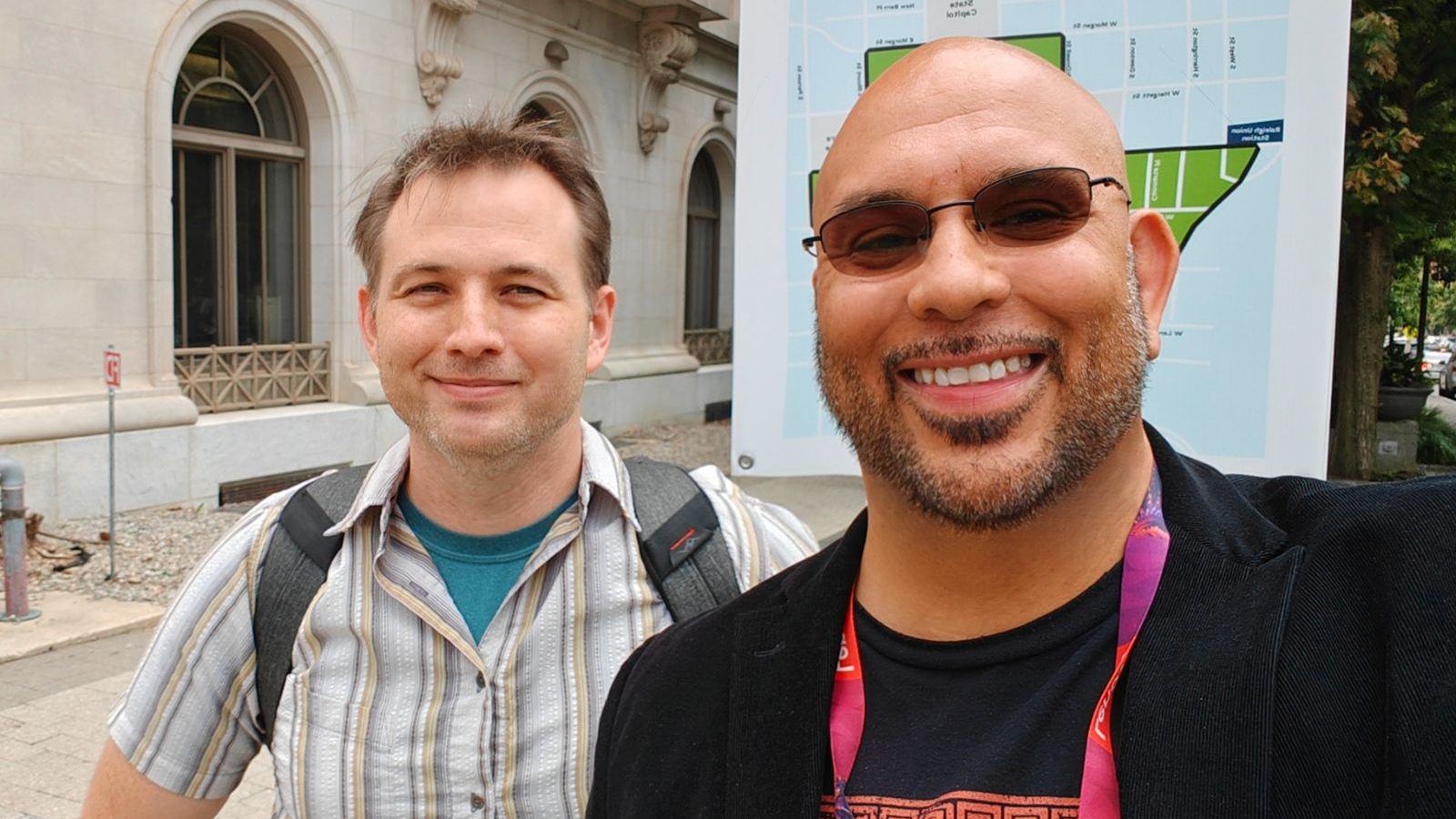Recently, I and our spirited managing editor Sean Riley, spent a few days with Lenovo at their Raleigh, North Carolina headquarters, learning about how the company is implementing processes to reach a net zero carbon footprint in the future.
During our visit with Lenovo, we saw firsthand how the company is aggressively trying to reach its net zero carbon goal by 2050. However, after several discussions with many journalists and companions, we came to the conclusion that neutrality is probably the more realistic goal.
From creating new biodegradable packaging materials sourced from sugar cane and bamboo to alternative case materials made from flax stalks, Lenovo is achieving steady progress to lower its footprint, and they should be commended.
Paths to sustainability

We toured the materials lab, got hands-on with several materials, and spoke with one team that works not only to create ergonomically pleasing laptops and peripherals but finding ways to use innovative materials that are not only more ecologically friendly but retain durability and reliability that Lenovo and ThinkPad are known for.

All of this is part of a process that is threaded together by several teams covering design, materials, and self repairability which help improve the lifespan of Lenovo’s products, thus lowering its overall carbon footprint and creating sustainable best practices from the elements mentioned above all the way through the supply chain.
The degree to which Lenovo looks across every detail of its product lifecycle to find potential optimizations is impressive, from packaging sustainability, low-temperature solder, recycled materials, warm water cooling technology, ocean-bound plastics, and even developing more sustainable shipping methods.
Lenovo is also focusing on using diversity as a way to create greater sustainability across eight countries and twenty-nine locations worldwide. With sites being RBA-VAP validated and working with their suppliers to become RBA-VPA validated. To become RBA-VPA validated, each supplier and Lenovo are audited by a third party every year to maintain the certification.
Hands-on and in-house sustainability
Lenovo keeps as much of its manufacturing process in-house as possible to help further these goals, which allows them to keep a keen eye on everything that goes into the consumer products we buy.
Lenovo also keeps a close eye on those manufacturing along its supply chains to make sure they remain in compliance, and if they do not, they work quickly to hold them accountable and get them to right the ship, so to speak, and get back within compliance.

Lenovo is also focused on recovering devices that have reached the end of their life cycles by providing many incentives. Asset recovery is an essential objective that Lenovo is taking seriously, and at the moment, they report they’ve reached about a 60% level of recovery which is really impressive.
Lenovo discussed its sustainability solutions portfolio, which covered climate action, energy efficiency, and circularity. Each covers four factors, such as managing its carbon footprint on the climate action end, with the development of Lenovo’s Nepture servers cooling system to help improve energy efficiency, and lifecycle extension of products, which in turn helps to improve the circularity of the devices Lenovo manufactures.

Bottom line
Over the two and half days we spent with Lenovo’s teams, we were exposed to a great deal of information that could be overwhelming, but from top to bottom, Lenovo’s staff made all of it highly digestible. They made it so that a heavy-handed wordy journalist like myself could turn around and share with you that the company is truly taking climate responsibility to a whole new level, and to see the process firsthand was fascinating.
After a lot of thought and conversations, it seems like carbon neutrality seems like the more realistic goal, basically reaching a balance between how much companies add and subtract from their carbon footprints. Net zero is a beautiful goal though and it’s clear Lenovo is going to keep striving for it in every way it can.
Back to Ultrabook Laptops
Source link
 notebook.co.id informasi dan review notebook laptop tablet dan pc
notebook.co.id informasi dan review notebook laptop tablet dan pc
